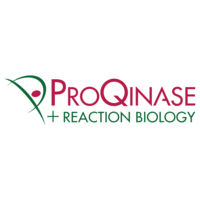预约演示
更新于:2025-05-07

Reaction Biology Europe GmbH
更新于:2025-05-07
概览
关联
1
项与 Reaction Biology Europe GmbH 相关的药物作用机制 FLT3抑制剂 [+1] |
在研机构- |
在研适应症- |
最高研发阶段终止 |
首次获批国家/地区- |
首次获批日期- |
100 项与 Reaction Biology Europe GmbH 相关的临床结果
登录后查看更多信息
0 项与 Reaction Biology Europe GmbH 相关的专利(医药)
登录后查看更多信息
116
项与 Reaction Biology Europe GmbH 相关的文献(医药)2025-04-21·Cancer Research
Abstract 4616: Detection of phosphorylated biomarkers in clinical blood samples: a flow cytometry platform utilizing smart tube fixation
作者: Weber, Holger ; Metzger, Philipp ; Oberhardt, Valerie ; Castro, Carla N.
2025-04-21·Cancer Research
Abstract 1314: Enhanced metastasis modeling in mice: impact of primary tumor removal and optimized injection techniques on therapeutic assessment
作者: Borrero-Wolff, Dennis ; Metzger, Philipp ; Sonntag, Roland ; Obodozie, Cynthia ; Bijelic, Gojko ; Weber, Holger ; Hummel, Jonas
2025-04-21·Cancer Research
Abstract 2891: In vitro comparison of Kadcyla and Enhertu in breast cancer with varying HER2 expression: proliferation, internalization, bystander effects and toxicity
作者: Metzger, Philipp ; Ehlert, Jan Eric ; Oberhardt, Valerie ; Bergo, Veronica ; Weber, Holger
1
项与 Reaction Biology Europe GmbH 相关的新闻(医药)2020-01-28
Bionetix, ProQinase and MercachemSyncom announced they have signed a joint multiyear integrated drug-discovery project, starting from target identification up to clinical candidate selection on an undisclosed target aimed at acute myeloid leukemia.
SUWON, Korea, FREIBURG, Germany and NIJMEGEN–GRONINGEN, the Netherlands, January 27, 2020 / B3C newswire / -- Bionetix
, a biotech company developing novel oncology drugs;
ProQinase
, an oncology-focused contract research organization (CRO) recently acquired by
Reaction Biology Corporation
(Malvern/PA, USA); and
MercachemSyncom
, a chemistry CRO specializing in medicinal chemistry and comprehensive medicinal chemistry (CMC), today announced they have signed a joint multiyear integrated drug-discovery project, starting from target identification (TI) up to clinical candidate selection on an undisclosed target aimed at acute myeloid leukemia (AML). The goal of the three-party team is to advance the project to the clinical phase by 2023. The total investment sum is “significant, of multimillion Euros”, but details are not being disclosed.
“We are excited to start this new project with MercachemSyncom and ProQinase,”
said Dr. DooYoung Jung, CEO of Bionetix.
“They have proven their quality in another project of ours, which is currently in the early development phase. When this new opportunity came up, our decision was quick and easy. We are convinced that the team will advance this program very efficiently.”
Dr. Frank Leemhuis, Managing Director of MercachemSyncom, commented:
“Our skilled and experienced team has a proven track record in medicinal chemistry and CMC and built valuable research assets, as the result of a consistent innovation strategy. This research project is an opportunity to build on these qualities, with the goal of serving and creating value for our client. ProQinase is our trusted biology partner, through years of collaboration. Together with Bionetix, we look forward to making essential contributions to this oncology program.”
“We are very grateful for our long-lasting partnership with MercachemSyncom, which enables us to deliver combined top-class scientific expertise to Bionetix,”
said Dr. Sebastian Dempe, Chief Executive Officer of ProQinase.
“This new opportunity of a multiyear collaboration, utilizing our entire breadth of oncology preclinical services, aims to develop a high-value asset for our mutual client. Working together on solid but flexible research plans, combined with efficiency, allow for short lead times and robust data-generation processes, which are key to the success of such integrated drug-discovery projects. With MercachemSyncom, we will make sure that our promises to Bionetix are met.”
About
Bionetix, Inc.
Bionetix, Inc. (‘Bionetix’) is a development-stage biotech, focusing on the development of innovative small-molecule-based, new drugs. With the aim of providing novel solutions to patients with high unmet medical needs, Bionetix was founded in 2017 and is developing IND-ready stage candidates, along with other early-stage programs in oncology. The combination of a unique operation system and industrial expertise of the Bionetix team enables the fast development of preclinical programs and efficient identification and incubation of novel, innovative, early-stage programs.
About
ProQinase GmbH
Based in Freiburg, Germany, ProQinase GmbH, recently acquired by Reaction Biology Corp, located in Malvern, PA, USA, is an industry leader and innovator for early-stage drug discovery. The combined company specializes in biochemical and cell-based assay services, protein production, and (immune-) oncology in vivo animal models, with over 1500 clients worldwide. Being the leading provider of kinase-based discovery services, with 660 kinases covered in the industry’s largest global offering of its kind, the global service portfolio offers an end-to-end solution, including partnering for integrated drug-discovery projects.
About
MercachemSyncom
MercachemSyncom is the leading European CRO, offering innovative chemistry, medicinal chemistry, early process research services, and GMP production to accelerate the drug-discovery and development process in a flexible and cost-effective way. MercachemSyncom offers integrated drug-discovery services from hit to clinic. Working for many pharmaceutical and biotech companies throughout the world, MercachemSyncom is recognized for its high-quality products and services and its unprecedented problem-solving capabilities.
Contacts
Bionetix Inc.
Dr. Hyuny Cho
Chief Operating Officer
+82 31-8064-1316
hyuny.cho@bionetixrx.com
MercachemSyncom
Dr. Frank Leemhuis
Managing Director
+31 24 3723300
Frank.leemhuis@mercachem.com
ProQinase GmbH:
Dr. Sebastian Dempe
CEO/ Managing Director
+49-176-80 77 61 34
s.dempe@proqinase.com
并购
100 项与 Reaction Biology Europe GmbH 相关的药物交易
登录后查看更多信息
100 项与 Reaction Biology Europe GmbH 相关的转化医学
登录后查看更多信息
组织架构
使用我们的机构树数据加速您的研究。
登录
或

管线布局
2025年07月20日管线快照
管线布局中药物为当前组织机构及其子机构作为药物机构进行统计,早期临床1期并入临床1期,临床1/2期并入临床2期,临床2/3期并入临床3期
其他
1
登录后查看更多信息
当前项目
| 药物(靶点) | 适应症 | 全球最高研发状态 |
|---|---|---|
SC-71710 ( FLT3 x VEGFR ) | 急性髓性白血病 更多 | 终止 |
登录后查看更多信息
药物交易
使用我们的药物交易数据加速您的研究。
登录
或

转化医学
使用我们的转化医学数据加速您的研究。
登录
或

营收
使用 Synapse 探索超过 36 万个组织的财务状况。
登录
或

科研基金(NIH)
访问超过 200 万项资助和基金信息,以提升您的研究之旅。
登录
或

投资
深入了解从初创企业到成熟企业的最新公司投资动态。
登录
或

融资
发掘融资趋势以验证和推进您的投资机会。
登录
或

Eureka LS:
全新生物医药AI Agent 覆盖科研全链路,让突破性发现快人一步
立即开始免费试用!
智慧芽新药情报库是智慧芽专为生命科学人士构建的基于AI的创新药情报平台,助您全方位提升您的研发与决策效率。
立即开始数据试用!
智慧芽新药库数据也通过智慧芽数据服务平台,以API或者数据包形式对外开放,助您更加充分利用智慧芽新药情报信息。
生物序列数据库
生物药研发创新
免费使用
化学结构数据库
小分子化药研发创新
免费使用